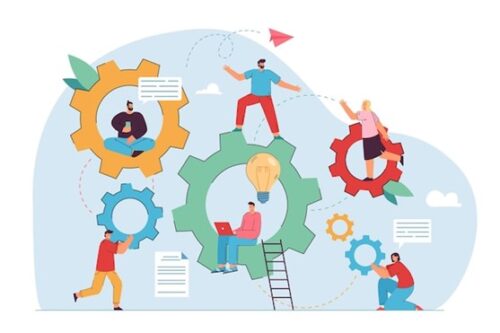In our quest for meaningful and fulfilling relationships, we often find ourselves struggling to understand and connect with our partners on a deeper emotional level. The key to unlocking the code lies in the way we think and process information. This is where the Herrmann Brain Dominance Instrument (HBDI) comes into play. By understanding our thinking preferences and those of our partners, we can revolutionize our relationships and create a stronger emotional bond. In this article, we will explore the power of HBDI and how it can transform the way we communicate, connect, and grow together.
The Whole Brain Model: Understanding HBDI
HBDI, also known as the Herrmann Brain Dominance Instrument, is a psychometric assessment that reveals our preferred thinking styles. Often referred to as the “Whole Brain Model,” it divides the brain into four quadrants: analytical, practical, relational, and experimental. Each quadrant is represented by a different color, reflecting our dominant thinking preferences. By understanding our thinking styles, we gain valuable insights into our own and our partner’s cognitive processes, enabling us to communicate more effectively and build stronger relationships.
The Origins of HBDI: Ned Herrmann’s Legacy
The brainchild of William “Ned” Herrmann, HBDI was born out of his fascination with the creative aspects of the brain. As a physicist and manager at General Electric, Herrmann sought to inspire creativity and innovation among employees. His research and development of the dominance model began in the late 1970s and has since become a widely recognized tool for understanding thinking preferences. Although Herrmann passed away in 1999, his daughter Ann Herrmann-Nehdi carries on his legacy as the current CEO of Herrmann International.
The Popularity of HBDI: A Global Impact
With over 2 million people worldwide having completed their HBDI profiles, it is clear that this assessment has made a significant impact. HBDI profiles have been the subject of numerous dissertations, books, and articles, highlighting its relevance and effectiveness. Renowned companies such as IBM, Coca-Cola, Kraft, Goldman Sachs, and Target have embraced HBDI as a valuable tool for understanding their employees’ thinking preferences and enhancing team dynamics. The accessibility of HBDI through Herrmann International ensures that practitioners have access to a wealth of insights and resources.
The HBDI Assessment: Understanding Your Profile
The HBDI assessment consists of a 120-question survey that results in a profile of your preferred thinking preferences. It provides a comprehensive understanding of how you process information and make decisions. The profile is divided into four quadrants, each representing a different thinking style. The Blue quadrant signifies logical and analytical thinking, the Green quadrant represents practical and structured thinking, the Red quadrant reflects emotional and interpersonal thinking, and the Yellow quadrant embodies creative and holistic thinking. By understanding your profile, you can leverage your strengths and adapt your communication style to connect more effectively with others.
Compassionate Communication: The Power of Understanding
One of the fundamental principles of HBDI is compassion. By understanding and valuing our own thinking preferences as well as those of our partners, we can foster a greater sense of empathy and connection. Mutual compassion is crucial in maintaining healthy relationships, especially during challenging times. When both partners practice self-compassion and understanding, they can navigate difficult emotions with care and communicate their needs and concerns effectively. Compassionate communication allows for open and honest dialogue, fostering a deeper emotional bond and a stronger foundation for the relationship.
Enhancing Connection: Openness and Transparency
Openness is another vital aspect of building emotionally healthy relationships. To be open with others, we must first be open with ourselves. This involves becoming more self-aware and familiarizing ourselves with our thoughts, feelings, and behaviors. By developing this self-awareness, we can cultivate a greater understanding of our partners and their perspectives. It’s important to create a safe space where both partners feel comfortable expressing their opinions and sharing their vulnerabilities. When we communicate openly and transparently, we foster trust and create an environment that encourages growth and connection.
Deepening the Relationship: Cultivating Depth and Shared Values
A healthy and fulfilling relationship is one that continues to grow and deepen over time. HBDI emphasizes the importance of cultivating depth in a relationship by engaging in shared activities and interests. By exploring new hobbies, engaging in intellectual and emotional conversations, and harmonizing values, partners can create a strong foundation for their relationship. This shared depth allows for a sense of connectedness and mutual growth. Furthermore, commitment plays a crucial role in deepening the relationship. By prioritizing the relationship and demonstrating loyalty and support, partners can weather the storms of life together, creating a lasting and fulfilling bond.
Equality and Empowerment: Building a Strong Foundation
Equality forms the bedrock of a healthy relationship. It involves respecting each other’s rights, providing equal opportunities for growth, and sharing responsibilities. In an egalitarian relationship, decisions are made collaboratively, with input from both partners. Each partner’s unique strengths and qualities are valued and leveraged to create a balanced and empowered dynamic. By fostering equality, partners can create an environment where both individuals feel seen, heard, and valued. This foundation of equality empowers each partner to contribute their best and fosters a sense of mutual respect and appreciation.
The Journey Forward: Embracing HBDI for Lasting Relationships
In conclusion, HBDI offers a powerful framework for understanding ourselves and our partners on a deeper level. By embracing our thinking preferences and those of our partners, we can revolutionize our relationships and create stronger emotional connections. Compassion, openness, depth, and equality are the pillars of emotionally healthy relationships, and HBDI provides a roadmap for cultivating these qualities. As we embark on this journey, let us remember that building lasting relationships requires sustained effort and a commitment to growth. By cracking the code of HBDI, we can unlock the potential for profound and transformative connections with our partners.
If you’re ready to take your relationship to the next level and unlock the power of HBDI, reach out to us at info@whsandtrainingcompliance.com.au or call us at 07 5499 2406. Our team of relationship coaches is dedicated to helping you create a conscious, loving, and evolving relationship. Let’s crack the code together and build a future filled with love and connection.












